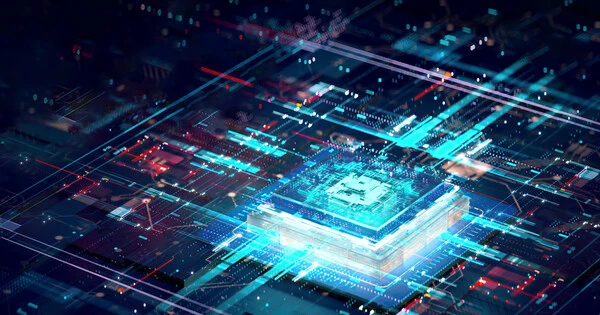Optical computing is a branch of computing that uses light rather than electronic signals to perform various computational tasks. Information is processed and transmitted using electric currents flowing through electronic circuits in traditional electronic computing. Optical computing, on the other hand, uses properties of light to perform computations, such as its speed and parallel processing capabilities.
For data processing, data storage, or data communication, optical computing or photonic computing employs light waves generated by lasers or incoherent sources. For decades, photons have shown promise in providing greater bandwidth than electrons in conventional computers.
The majority of research projects aim to replace current computer components with optical equivalents, resulting in an optical digital computer system capable of processing binary data. Because optical components could be integrated into traditional computers to create an optical-electronic hybrid, this approach appears to offer the best short-term prospects for commercial optical computing. Optoelectronic devices, on the other hand, consume 30% of their energy by converting electronic energy into photons and back; this conversion also slows message transmission. All-optical computers do not require optical-electrical-optical (OEO) conversions, resulting in lower electrical power consumption.
The optical switch, which controls the flow of light signals, is the fundamental building block of optical computing. Optical switches, like electronic transistors, can perform logical operations such as AND, OR, and NOT. They can also be combined to form larger circuits and devices.
The principles of optical computing have been used to design application-specific devices such as synthetic-aperture radar (SAR) and optical correlators. Correlators can be used to detect and track objects as well as to classify serial time-domain optical data.
There are several advantages associated with optical computing:
- Speed: Light travels at a significantly higher speed than electric currents, allowing for faster data processing and transmission. This can lead to improved computational performance.
- Parallelism: Light waves can be easily split and manipulated, enabling parallel processing of multiple data streams simultaneously. Optical computing can potentially handle large amounts of data in parallel, leading to increased computational efficiency.
- Energy efficiency: Optical systems can consume less energy compared to their electronic counterparts. Light signals do not produce heat as much as electric currents, resulting in reduced power consumption.
- Interference immunity: Optical signals are less susceptible to electromagnetic interference, which can be a significant advantage in certain applications.
Despite these advantages, there are challenges that need to be overcome to make optical computing more practical and widespread:
- Integration: Integrating optical components with traditional electronic circuits is still a technical challenge. Developing efficient interfaces between optical and electronic systems remains an area of active research.
- Signal loss: Optical signals can experience losses due to scattering, absorption, and other factors. Maintaining the quality and integrity of the signals over long distances and complex optical circuits is a challenge.
- Cost: Optical components, such as lasers and optical switches, can be expensive to manufacture and maintain. As the technology matures and scales up, the cost is expected to decrease.
















